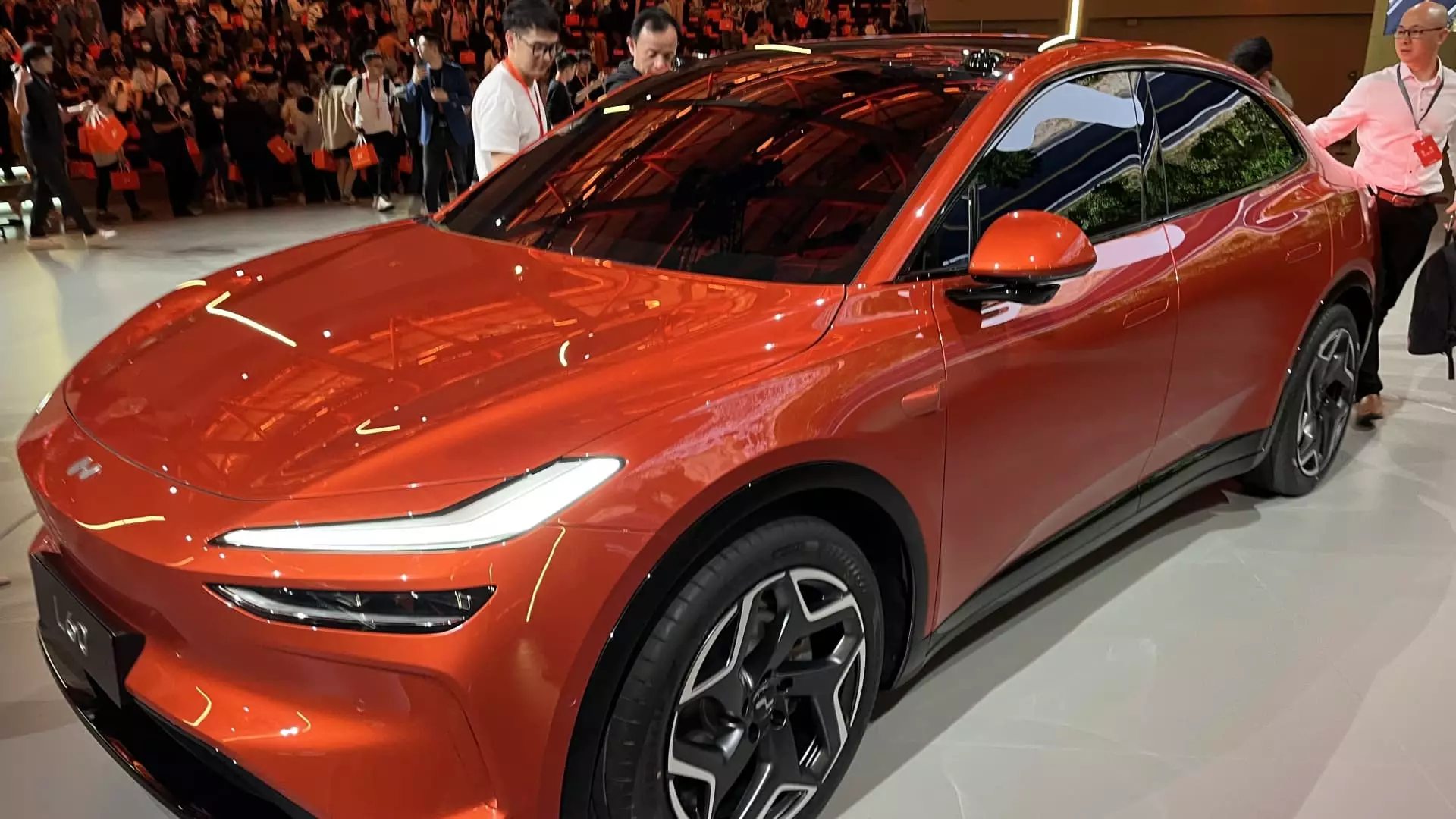In a rapidly evolving electric vehicle (EV) arena, the emergence of the Onvo brand, introduced by Chinese automaker Nio, signals a strategic maneuver to address market competition. With the debut of the L60 SUV, Onvo is positioning itself as a formidable alternative to established players such as Tesla. Priced at a base of 149,900 Chinese yuan (approximately $21,210), when battery subscription services are leveraged, Onvo seeks to attract budget-conscious consumers looking for affordable EV options. This move not only enhances Nio’s portfolio but also sets the stage for an unprecedented price battle within the EV sector.
The pricing of the Onvo L60 raises noteworthy questions about sustainable profit margins and the long-term viability of such aggressive discounting strategies. The model also offers a battery rental option at just 599 yuan per month, which further lowers the barrier to entry for potential buyers. However, this aspect of the offering also presents risks, as reliance on battery rental could deter consumers wary of long-term costs compared to traditional purchasing models.
In comparison, Tesla’s Model Y, priced at 249,900 yuan, becomes significantly less appealing, pushing consumers to rethink their options. The L60’s price positioning undoubtedly disrupts the local market, compelling rivals such as Zeekr and Xpeng to recalibrate their strategies. Zeekr’s upcoming SUV, the 7X, set to launch soon at 239,900 yuan, exemplifies the competitive pressures induced by Onvo’s entry.
The emergence of multiple rivals is reshaping the EV landscape in China, where companies are increasingly launching lower-priced models to capture market share. Xpeng’s Mona brand, with starting prices as low as 119,800 yuan, is indicative of a broader trend towards more accessible EV options. This saturation raises essential questions: what will it take for consumers to remain loyal to a specific brand, and how will manufacturers differentiate themselves amid a flurry of choices?
As competition heightens, loyalty shifts become critical, and brands may find themselves reducing margins to attract customers. Tesla, known for its stringent quality standards and advanced technology, could be put in a challenging position where it must reassess its pricing strategy to guard against the encroachment of more affordable rivals.
While Onvo is focused on a domestic market strategy for the time being, the broader context of international expansion looms large. With the European Union preparing to impose tariffs on imported Chinese EVs nearing the end of the year, the landscape for Chinese manufacturers becomes complicated. Nio’s CEO, William Li, acknowledged the rising costs associated with bringing vehicles to Europe due to these new duties. This begs a wider inquiry: as tariffs rise, will the potential customer base for these brands shrink, or will companies adapt?
Li’s optimistic projections for the L60 to achieve 10,000 monthly deliveries by December showcase Nio’s confidence in the brand’s immediate impact. Yet, such ambitious goals must be tempered with the recognition that establishing a presence in an international market, particularly one as competitive as Europe, will necessitate patience and strategic adjustment.
The Path Forward: Anticipations and Expectations
With Onvo and its budget-friendly offerings signaling a shift in consumer expectations, the onus is now on established brands to respond proactively. The initial buzz surrounding Onvo’s launch, illustrated by a brief rise in Nio’s stock, highlights investor confidence, but can this momentum be sustained?
Furthermore, Nio’s upcoming plans for an even lower-cost brand, Firefly, showcases a drive to capture a more extensive market segment. This strategy could lead to a diversification of revenue streams but also risks diluting the premium image Nio has cultivated thus far.
Onvo’s entry into the electric vehicle market is both a calculated risk and a bold proclamation. While it undoubtedly calls into question the sustainability of current pricing models, it also invites a renewed focus on innovation and differentiation from competitors. The upcoming quarters will be crucial for assessing how these market dynamics unfold and whether Onvo’s rapid rise can withstand the pressures of both competition and consumer expectations.

